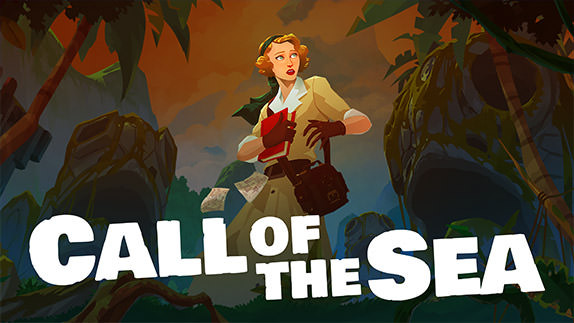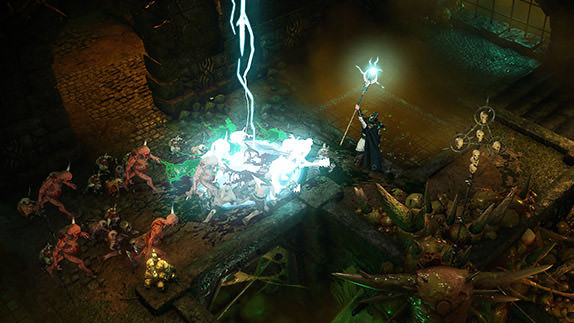Post Human W.A.R Review

 By Marcus Jones | January 16, 2018
By Marcus Jones | January 16, 2018
Post Human W.A.R is a rather interesting real-time strategy game set after the extinction of Humanity. While no longer a threat to the world, our impact is lasting. The cities and robots we created still adhere to the systems we set up, but our environmental impact spawned another race of sentient creatures know as Stront, a psychic race born from our pollution (that looks like a giant, mushy crab). Stronts came about while Humanity still survived and faced persecution from us, leading to a segment of them to break off and become Wraaks bent on destroying what remained of Humanity's legacy. The other group became the Anthropists, aimed at surviving amongst our dead culture. In the midst of all of this, the robots themselves became more self-aware, forming the R-PATCH as a means to protect the legacy of their human creators.
Post Human's overall structure eliminates much of the RTS archetypes and focuses more directly on the combat. It's a face paced game without the need to build a base and then build an army. Rather, every match is assigned a number of points (500, 800, or 1200 online) and these points are used to select from a robust unit list of 12 for each race. Each unit has its own cost, type of attack (ranged or melee) and a set of varying stats for health, strength, defense, speed, and range. While the races do share similar unit roles like artillery, melee, or flying units, each race has a very distinct and unique design with variations that provide excellent balance across the armies. The artillery unit for the R-PATCH costs a little more, but comes with a stronger attack at the cost of speed whereas the Wraak artillery is faster, cheaper, and a little weaker. This helps to balance the game, both against AI and human opponents.
Fighting itself takes place on a hex grid map and boy there's a lot of maps. The maps themselves contain obstacles, status inflicting hexes, and power pickups that allow you to temporarily boost unit stats, or repair damage. Once your army is assembled, you're also expected to pick a champion unit. Your champion is vital, and if it dies during the match, it's an instant loss on your part; usually, your champ stays hidden, but you can openly present him for a set of permanent stat boosts. Once you're ready, battle consists of clicking on your unit and either keeping within its move-attack range or forcing it to "run" to its max distance at the cost of its attack. Attacking is then simply clicking on enemy units or potentially using your unit's unique ability by clicking on a symbol near its unit icon. Some abilities are auto-triggered depending on the scenario (like if they always use a special attack), but otherwise, it's down to outmaneuvering, outgunning, and outthinking your opponent at this point.
In a way, I consider Post Human an "RTS-lite" type game. The game is distinctly RTS in nature and relies on strategy for success, but it eliminates the base building or resource gathering element seen in most games in the same genre. Even more modern ones, like Relic's Dawn of War and the Company of Heroes series which focus on land grabs to build resources is still heavily different from Post Human. Is that a bad thing for Post Human? Not necessarily, but it's more dependent upon what kind of gameplay you're actively seeking. It may leave the single player feeling a little empty since the campaigns feel a bit short, but that's because the gameplay is faster overall. You're expected to get in, drop your troops, and complete objectives. Each campaign comes in at six missions apiece, and they are at least fun and full of quirkiness, but they are quick.
The game's primary focus is found online. The game's conquest mode is essentially ranked mode, whereas there is also free play. I've never seen more than a few active free games going at any given point, and there have been a few times where I've waited for quite some time before finding an opponent for conquest. While you wait for the matchmaking to find an opponent, you're able to launch any of the single-player modes, and upon completion of the online match, you can resume from where you left off. I found that to be a great addition since most RTS games either push your focus onto one mode or the other, but Post Human allows a bit more freedom of choice.
Winning at Conquest grants you territories, experience, and post coins. Territories gained translate to your overall global ranking, whereas levels grant new things like titles. It's all mostly for bragging rights, though keep in mind that you start with a handful of territories and the guys at the top are in the mid-hundreds (like the #3 guy who wiped the floor with me). Post coins are used to purchase in-game aesthetic items like new skins, avatars, and team colors. Nothing, thankfully, that changes the game akin to a powerful loot crate. The conquest and online play, in general, is a must have to help flesh the game out, but the buyable items seem a little pointless if you're not into those types of things. Mid-battle, you're also able to somewhat chat with your opponent, but I was only able to use the game's Parley (emojis) or preset voice greetings. I never could talk with my opponents directly without adding them as contacts.
Thankfully the vibrancy of the game and its quirky attitude does help to fill in some of the games. The Codex paints an in-depth backstory to the game, while the creative designs of the units - a flying fridge that attacks with icicles, a koala riding a caribou launching rocks around, or the sloth with a crossbow for examples - show just how goofy and creative the game is. Tack on some fun, well-designed maps and it's easy to get into it.
Simply Put
Post Human W.A.R, as I noted, feels like "RTS-lite" and is even reminiscent of a board game sprung to life on my PC. The points system, grid maps, and vibrant nature of the games has me imagining pulling everything out of a box and setting it up on my kitchen table. The general simplicity has a high-level draw, and it offers an appeal of fun for anyone looking to get into something that's not overly violent and has a budding online community to play against. While I think some of the chat features need to be revamped, it's definitely a game newer RTS players could get into. My only real complaint is the lack of heavy substance; since the campaign feels quick and the focus of the game seems to be primarily directed towards online, those looking for a deeper single-player experience may feel left out.
Note: Post Human W.A.R was reviewed on PC. A digital copy of the game was provided by the publisher/developer.




